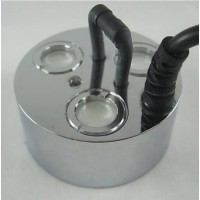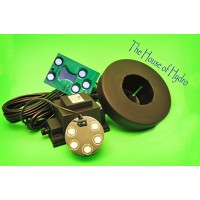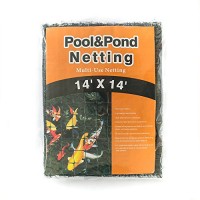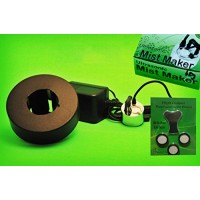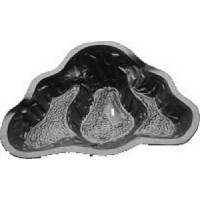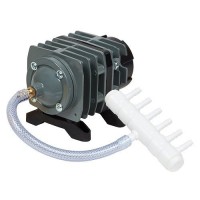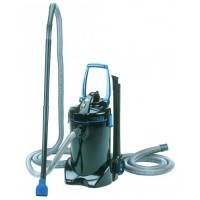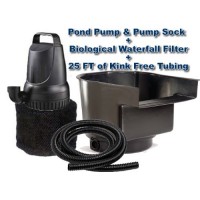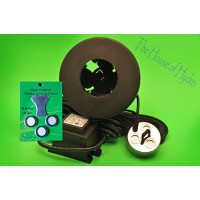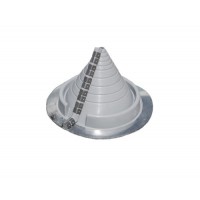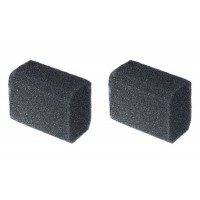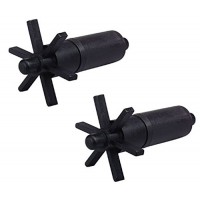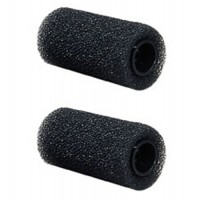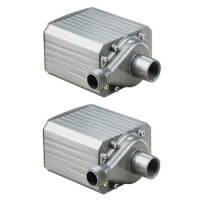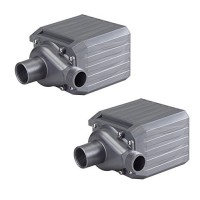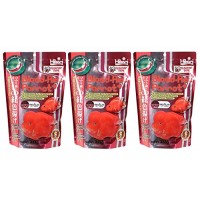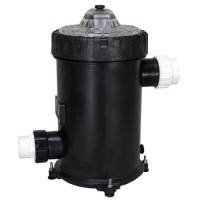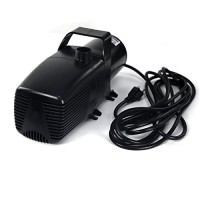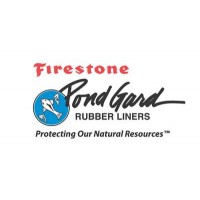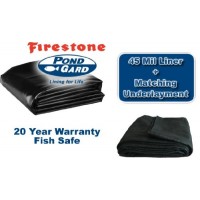Pond Supplies
AquaticaPlus.com is owned and
operated by people who have spent years in the pursuit of pond
equilibrium and who are passionate about getting value for the
investment into pumps and water quality products for ponds. We have been
been in the pond and aquatics business serving the pond industry at a
professional level for years and we enjoy keeping ponds, pond fish and
plants as much as you do. Our first goal is to provide recommendations
and reviews of products that are, in our opinion, the best way to
affordably ensure your pond stays healthy. We offer a full range of categories that are full of the most requested pond products both mechanical and biological as well as decorative accessories and replacement parts.
Refine Search
- Air Pumps, Air Stones & Air Hose
- Algae Control & Water Treatments
- Automatic Feeders
- Bacteria
- Barley Straw, Peat Granules & Extracts
- Basins
- Books & Guides
- Bottom Drains
- Container, Barrels & Watergarden Kits
- Dyes
- Filter Media, Replacement Foams, Pads, Media Bags , Bio-Media & Brushes
- Filters & Skimmers
- Pest & Predator Control
- Plant Care
- Plumbing Fittings, Valves, Bulkhead Fittings & Water Fill Valves
- Pond Kits
- Pondless Waterfall Kits and Components
- Pre Formed Molded Ponds & Watercourses
- Pumps
- Replacement Parts
- Salt & Salt Meters
- Skimmers & Skimmer Filters
- Spawning Brushes & Supplies
- Spitters & Decor
Commercial 5 Head Mist Maker Kit- (Five Disk Mist Maker, Transformer, Float, 5 House of Hydro Replacement Discs)
This commercial grade, Five Disc Mist Maker Kit comes with everything you need to get started, and stay running. Kit includes Mist maker head, transformer, float, and 5 extra House of Hydro, high spee..
Gardener House Small Pool and Pond Net-Cleaning the pool or water feature- Repel debris and leaves- 14x 14ft
BONUS!SALE FOR A LIMITED TIME ORDER NOW TO CELEBRATE OUR JOURNEY ON AMAZON! SAY NO TO BE A SNACK BOWL Wherever you lived,it's time to stop your pond to be a snack bowl from HAWKS, OWLS,BLUE HERONS,CA..
Mist Maker Kit - The house of Hydro -(mist maker, transformer, float, 3 replacement discs)
This commercial grade, single disc Mist Maker Kit comes with everything you need to get started, and stay running. Kit includes Mist maker head, transformer, float, and an extra set of replacement dis..
Next Generation SILVER KING FLEX POND 91 GALLONS
The Silver King FlexPond holds 91 gallons of water and is ideally suited for corner installation locationsnext to decks or patios. Providing the best of both worlds...shape & benefits of pre-formed po..
O2 Commercial Air Pump, 571 gph 2.47 psi 20watts 120volt Hydroponics,Aquarium,Pond air pump
The Elemental Solutions® O2 Commercial Pump's powerful electromagnetic motor pushes 571 gallons per hour to provide reliable output for air diffusion devices. It features high-quality aluminum alloy h..
OASE Pondovac 4 Vacuum for Ponds and Water Gardens
The OASE Pondovac 4 pond vacuum can not only clean your pond easily but also maintain your pool or swim pond - all in comfort from the edge of the water with the included accessories. The OASE Pondova..
Submersible Pond Pump 3200 GPH + Waterfall Filter Combo Kit with Pump Protector and 25ft Kink Free Tubing
Atlantic BF1500 Bio-Waterfall Filter Rugged high-density polyethylene shell warranted for life Open swirl chamber for enhanced water flow through filter media Upflow design, Bio-Tech filter pads, and ..
The House of Hydro Commercial 3 Head Mist Maker Kit- (Three Disk Mist Maker, Transformer, Float, 3 Replacement Discs)
This commercial grade, three disc Mist Maker Kit comes with everything you need to get running, and stay running. Kit includes Mist maker head, transformer, float, and an extra set of House of Hydro's..
#2 Round Gray Zip-Seal Pipe Flashing (3/8" - 4 1/2")
#2 Round Gray Zip-Seal Retrofit Pipe Flashing. Fits pipes with outside diameters of 3/8" - 4 1/2".EPDMWithstands temperatures up to 239° FStainless Steel ClipsFactory ISO 9001 registered..
(2) Pondmaster Aquabelle Replacement Foam Filter Blocks for 250-700 GPH Pumps
1 Buy = 2 Pondmaster Foam Filter Blocks! The Pondmaster Aquabelle Replacement Foam Filter Block is an extra large prefilter that provides mechanical, biological, and chemical filtration. It works grea..
(2) Pondmaster Replacement Assembly Impellers for Model 7 Water Pumps - 12585
1 Buy = 2 Pondmaster Replacement Impellers! The Pondmaster Impeller Replacement will get your pump back to operating at max flow capacity. This particular impeller is specifically Designed for Model 7..
(2) Pondmaster Small Replacement Foam Pre-Filters for 250-700 GPH Pumps - 12505
1 Buy = 2 Pondmaster Foam Pre-Filters! The Pondmaster Replacement Foam Prefilter is a small prefilter that provides mechanical, biological, and chemical filtration. It works great with all mid-range p..
(2) PONDMASTER Supreme PM-12 1200 GPH Magnetic Drive Pond Fountain Pumps | 02722
The Pondmaster 02722 Mag Drive Pond Pump is a magnetically driven centrifugal water pump. It has no seals to wear and contains no oil. The *Pondmaster 02722* Mag Drive Pond Pump can be used submerged ..
(2) PONDMASTER Supreme PM-24 2400 GPH Mag Drive Pond Aquarium Max Pumps | 02750
1 Buy = 2 Pondmaster 2400 GPH Mag Drive Pond Pumps! The Pondmaster 02750 Mag Drive Pond Pump is a magnetically driven centrifugal water pump. It has no seals to wear and contains no oil. The *Pondmast..
(3 Pack) API Pond Care Aquatic Plant Food, 25 Tablets each
3-Pack of PondCare Aquatic Potted Plant Food Fertilizer, 3.8 Oz 25 Tablets Each.Product Highlight(s):Contain macronutrients and essential trace elements.Continuously releases plant food tabletsGreat f..
(3 Pack) Hikari 330342 Blood, Red Parrot+, Medium Pellets, 333g 11.7oz
Supports immune system health, daily diet for cichlids as well as other large tropical fish. Provide nutrition and energy for the well-being of top- and mid-water Feeding cichlids, including south Ame..
1-1/2" Strainer Basket
Screens out large debris to protect your external pump from damage that could be caused by small sticks or gravel.Strainer basket for use with Sequence external pumpsThis model fits Sequence pumps wit..
1/3 HP Koi Pond Pump Goldfish Water Pump 3200GPH
◙ Max Flow Rate: 3200 GPH ◙ H-Max (Lift height): 20 feet ◙ Power: 155 Watt ◙ Voltage: 110V 60Hz ◙ HorsePower: 1/3 ◙ Immersion Depth: 10ft ◙ Length of power cord: 16 feet ◙ Dischar..
10 x 10 Firestone 45 Mil EPDM Pond Liner
Firestone Pondgard liner is 10 foot wide, 45mil EPDM-type, rubber liner based on EPDM (ethylene propylene diene terpolymer) synthetic rubber and a highly flexible, stable waterproofing membrane. Spec..
10 x 12 Firestone 45mil Pond Liner and Matching Underlayment Kit
This EPDM rubber pre cut and boxed pond liner can be used for building all types of ponds, water gardens, basins for fountains, bog gardens, lining cracked hard shell ponds and other applications. The..
Common parts to a small man made pond may include:
Liner: When building a lined pond use a 45 mil to 60 mil thick fish-safe EPDM for longevity and puncture resistance. An under layer should be placed under the liner after sand and compacted earth have been properly established. If large boulders are being placed in the pond a geo-trextile membrane should be placed on top of the liner to prevent granite corners or jagged rock edges from compromising the liner. Leaking ponds are no fun to fix.
Skimmer: The typical skimmer allows water to be drawn from the surface of the pond and can be outside of the pond connected to the liner as a pump vault or can be inside the pond as a satellite pond skimmer or free-floating skimmer. It collects leaves, pollen, twigs, uneaten food and all other kinds of floating debris. The skimmer usually has a collection basket that can be quickly emptied on a regular basis to allow the skimmer to run properly. Floating skimmers may also have a foam filter insert that sits underneath the basket to filter out the finer particles. Brushes to prevent fish from entering the skimmer mouth are also available in some models or can be added manually.
Bottom drains: Bottom drains are usually not required in small water gardens or shallow goldfish ponds but can be very beneficial for larger Koi ponds. A bottom drain allows any heavy solidparticulate to be drawn out the drain and carried to the mechanical filtration system. Some bottom drains are equipped with EPDM membrane fine bubble diffusers which are connected to air pumps on shore which help create circulation and improve the draining effect and of course adding much needed oxygen to a pond at the lowest point which is very efficient.
Mechanical filter: Mechanical filtration can be achieved using many different techniques but the principle goal remains constant: the job of tha mechanical filter is to trap solids, preventing them from clogging the biological filter or reducing the effectiveness of the growing biofilm on the matrix inside the biofilter. The mechanical filter should be backwashed or cleaned out often. Types of mechanical filters include Vortex, brushes, matting, sand and gravel, sieve screen, and settlement chamber. Mesh bags and common Matala foam materials can be used to create homemade pond filters using basic plumbing parts and a thorough understanding of how the pump intake can be used to draw material through the filter.
Biological filter: Biological filters convert the nitrogenous wastes from the fish and offer a vibrant habitat for bacteria. A biofilter can be constructed in many different ways and in each case the purpose of the filter is to provide the maximum surface area for beneficial cleaning biofilm to develop and thrive so that the water is being cleaned naturally and without the overuse of chemicals. It is important for the koi keeper to understand how the filter is to be cleaned before they install one. Proper and regular cleaning of the mechanical and biological filters is a key factor in contribution for the health and quality of the koi and the entire pond. Bio-filters are sometimes divided into sub groups such as aerated or non-aerated and there are a variety of types of bio-filters to match the required parameters of filtration and pond capacity including aerated types like the moving bed filters and Bakki shower or Trickle filters and the non-aerated variety which include sand filters, cross-flow-filters and the pressurized and bead filters.
Ultraviolet light: Ultraviolet clarifiers are used to make algae flocculate so that the clumped algae can be removed via the mechanical filtration. A UV sterilizer will also kill free-floating bacteria in the pond water.
Water and air pumps: Pond pumps are used to create waterfalls and fountain sprays and should be sized to the considerations of tubing diameters, hose lengths, hydro-static head etc. A waterfall pump should give about 100 gallons of flow per hour per inch of width as a general rule. While the aesthetic use of pumps is important the most important pumping job of the Water pump is to move water through the filter system and back to the pond in a recirculating manner at the correct volume. The important thing to understand about pumps is that they be sized to the pond and the filter system. The pump should be circulating the total volume of water at least once per hour for proper water quality. UV filters and clarifiers and mechanical filters all have maximum flow recommendations which should be adhered to.
An air pump can be used to increase dissolved oxygen. In a heavily stocked fish pond, an air pump is a necessity. Air pumps and diffusers can also be used to over winter fish. Designing an aeration system means choosing the correct CFM air flow from the pump along with the output pressure range of the pump and the style of diffuser being used; ie; coarse bubble diffusers or micro-bubble diffusers or bubble tubing in stocking pens.

